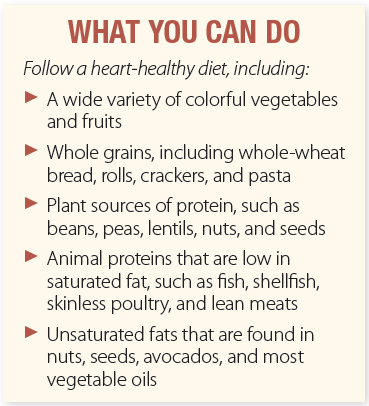Be Alert for Atypical Heart Attack Symptoms
Are you more concerned about the possibility of having cancer or heart disease? Although the idea of having cancer sparks fear in most women, the numbers show that we’re far more likely to have heart disease than cancer.
In fact, more than 60 million women in the United States have some form of heart disease. And one of the most common events caused by heart disease is a heart attack; each year, more than 800,000 Americans have heart attacks.
Anatomy of a Heart Attack
Myocardial infarction, known more commonly as a “heart attack,” occurs when there is a sustained decrease in blood flow (infarction) to the heart muscle (myocardium).
“Blood flow is decreased due to buildup of cholesterol in the blood vessels (coronary arteries) of the heart, which narrows the vessels, and/or to disruption of the cholesterol buildup that leads to complete blockage of the coronary arteries,” explains Tracy K. Paul, MD, a cardiologist at the Weill Cornell Medicine Women’s Heart Program. Blood carries oxygen throughout the body, so decreased blood flow means less oxygen.
A Variety of Symptoms
The most common, classic heart attack symptom is an uncomfortable pressure, pain, or squeezing sensation in the center of your chest. However, women are more likely than men to experience different symptoms, including pain in one or both arms, neck or jaw pain, shortness of breath, breaking out in a cold sweat, sudden-onset nausea/indigestion, or extreme fatigue—even in the absence of ‘classic’ chest discomfort,” says Alicia Mecklai, MD, a cardiologist at the Weill Cornell Medicine Women’s Heart Program. Other possible symptoms include upper back pain and feeling weak, dizzy, or lightheaded.

Gender Differences
In both men and women, an interruption in blood flow to the heart is caused by a cholesterol blockage in one of the main arteries. However, women are more likely than men to have chest pain or a heart attack without such a blockage.
“Cardiac syndrome X is another cause of chest pain more commonly seen in women. It is caused by damage to the walls of the heart’s smaller coronary vessels. This is also called microvascular angina or microvascular ischemia,” says Rebecca Ascunce, MD, a cardiologist at the Weill Cornell Medicine Women’s Heart Program.
Diagnostic tools and treatment options for a heart attack are the same for men and women. However, because women often seek medical help later in the course of their heart attack and their symptoms may be different than classic chest pain, there can be a delay in timely diagnosis and treatment.
“This has improved over the years as awareness of the risks of heart disease to women has increased,” says Nivee Amin, MD, a cardiologist at Weill Cornell Medicine.
Women-Only Risk Factors
“Some risk factors play a bigger role in the development of heart disease in women, including emotional stress, depression, and having a history of autoimmune disease, such as rheumatoid arthritis or lupus. Risk factors unique to women are the natural decline in estrogen after menopause and having a history of pregnancyrelated complications such as eclampsia, preeclampsia, or gestational diabetes,” explains Dr. Mecklai.
Risk factors for both men and women include cigarette smoking, high blood cholesterol, high blood pressure, diabetes, obesity, physical inactivity, and having a family history of early heart disease.
Reduce Your Risk
Women can lower their risk of having a heart attack in several ways.
“For all women, it is important to maintain good blood pressure control, to limit the amounts of saturated fat and sodium in the diet, to engage regularly in physical activity, and to not use tobacco products. For women who have been diagnosed with heart disease, these steps are just as important, as well as working with a cardiologist who can tailor a care plan specific to the woman’s needs and type of heart disease she has,” says Dr. Amin.
The post Be Alert for Atypical Heart Attack Symptoms appeared first on University Health News.
Read Original Article: Be Alert for Atypical Heart Attack Symptoms »


